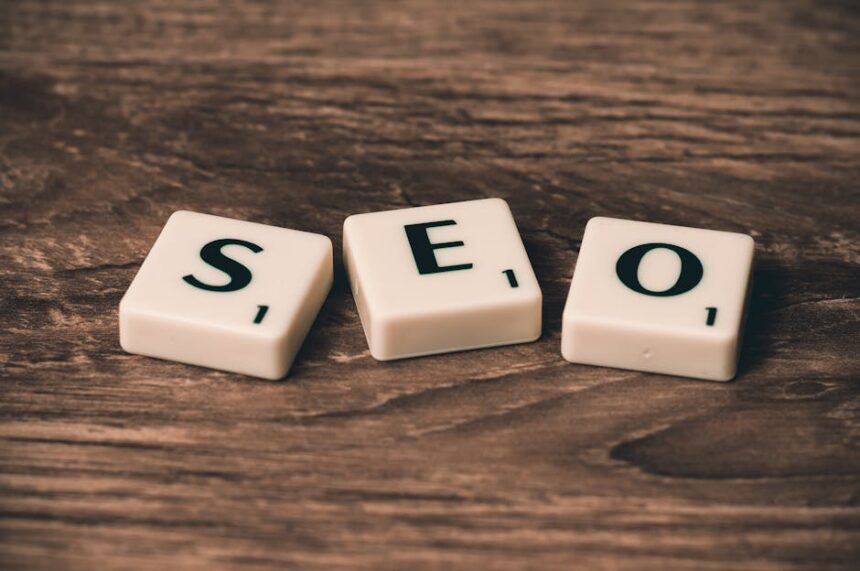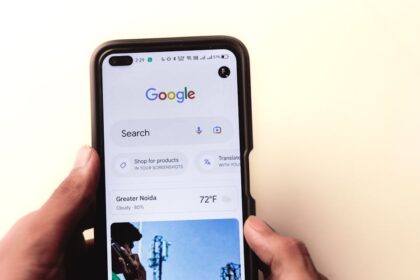The digital landscape has fundamentally evolved. Where search engine optimization was once a game of technical tricks and keyword density, it has now matured into a sophisticated discipline centered on a single, unwavering principle: delivering the best possible experience to the user. Google’s primary objective is to satisfy its users’ queries with the most relevant, helpful, and accessible content. Consequently, the line between on-page SEO and user experience (UX) has not just blurred; it has dissolved. They are two sides of the same coin. A technically sound page that frustrates a user is a failure. A beautifully designed page that search engines cannot understand is invisible. True digital success lies at the intersection of these two fields, where every optimization made for a search engine crawler simultaneously enhances the journey for a human visitor. This deep dive explores the critical on-page SEO techniques that directly and profoundly improve user experience, creating a virtuous cycle where happy users lead to higher rankings, and higher rankings lead to more happy users.
The Symbiotic Relationship Between On-Page SEO and User Experience
Understanding this symbiosis is the first step toward mastery. Search engines, particularly Google, have invested billions in algorithms like RankBrain, BERT, and MUM, which are designed to understand content and user intent with near-human nuance. These systems move beyond simple keyword matching and evaluate signals that indicate user satisfaction. When a user clicks on a search result, stays on the page, engages with the content, and doesn’t immediately return to the search results (an action known as “pogo-sticking”), it sends a powerful positive signal to Google. This behavior indicates that the page successfully fulfilled the user’s need.
On-page SEO elements are the building blocks that facilitate this positive interaction. A well-chosen title tag and meta description set clear expectations in the search engine results page (SERP), improving click-through rate (CTR) from the right audience. A logical heading structure allows a user to scan the content and find their answer quickly. Fast page load times prevent frustration and abandonment. Mobile-friendliness ensures a seamless experience for the majority of users. Each of these is a classic on-page SEO factor, but its primary impact is now measured through the lens of user experience. This alignment is further solidified by Google’s Page Experience update, which explicitly incorporates user-centric metrics like Core Web Vitals into its ranking algorithm. Therefore, approaching on-page SEO with a “user-first” mindset is no longer just good practice; it is the most effective and sustainable strategy for long-term search visibility.
This philosophy also directly ties into the concept of E-E-A-T: Experience, Expertise, Authoritativeness, and Trustworthiness. These are the qualities Google’s human quality raters look for in high-quality content. Many on-page elements help communicate E-E-A-T. Clear author information, well-researched content, citations to credible sources, and a secure, professional-looking website all contribute to a user’s perception of trust and authority. When a user trusts your content, they are more likely to engage with it, share it, and return to your site in the future—all positive signals that search engines are keen to reward.
Foundational Pillar 1: Content Quality and Relevance
The most crucial element of both on-page SEO and UX is the content itself. No amount of technical optimization can save a page that fails to answer the user’s query. The core of a successful user experience is providing a comprehensive, accurate, and satisfying solution to their problem or question.
Understanding and Satisfying Search Intent
Search intent (or user intent) is the “why” behind a search query. To create a positive user experience, you must correctly diagnose this intent and craft your content to match it perfectly. Mismatching intent is a primary cause of high bounce rates and low user satisfaction. There are four main types of search intent:
-
Informational Intent: The user is seeking information. Their queries often start with “what is,” “how to,” “why does,” or are simply nouns like “on-page SEO techniques.” To satisfy this intent, your content must be thorough, accurate, and easy to understand.
- UX & SEO in Action: Create comprehensive guides, step-by-step tutorials, detailed explanations, and definitions. Use visuals like diagrams, infographics, and videos to clarify complex topics. Structure the content with clear headings and lists so users can easily find the specific piece of information they need. Answering questions directly and concisely can also help you capture a coveted “Featured Snippet” in Google, which is a massive win for both visibility and user trust. For a query like “how to tie a bowline knot,” a user expects a step-by-step guide with clear images or a video, not a sales page for rope.
-
Navigational Intent: The user is trying to get to a specific website or page. They already know where they want to go. Queries include “YouTube,” “Facebook login,” or “Nielsen Norman Group.”
- UX & SEO in Action: For these queries, the primary goal is to make it easy for users to find your official site. Your brand name should be prominent in your homepage’s title tag. Ensure your site structure is logical and your navigation is clear. Having a well-optimized Google Business Profile is also crucial for local navigational queries. The user experience here is about frictionless access.
-
Transactional Intent: The user is looking to make a purchase or perform a specific action. Their queries are direct and include words like “buy,” “deal,” “discount,” or specific product names like “buy iPhone 15 Pro.”
- UX & SEO in Action: Transactional pages must be optimized for conversion. This means high-quality product images, clear pricing, visible “Add to Cart” or “Buy Now” buttons, trust signals like customer reviews and security badges, and a streamlined checkout process. The on-page SEO involves optimizing product titles and descriptions with relevant keywords, but the UX involves making the path to purchase as simple and secure as possible.
-
Commercial Investigation Intent: The user is in the buying cycle but is still in the research and comparison phase. They intend to transact eventually, but first, they need to evaluate their options. Queries include “best running shoes,” “Mailchimp vs. Constant Contact,” “iPhone 15 Pro review.”
- UX & SEO in Action: This intent is satisfied with detailed comparison articles, in-depth reviews, “best of” lists, and case studies. The user experience hinges on providing unbiased, detailed, and well-structured information that helps them make an informed decision. Use comparison tables, pro/con lists, and clear scoring or rating systems. Building trust is paramount here; if users feel you are providing a genuine, helpful analysis, they are more likely to click your affiliate link or purchase from you directly when they are ready.
Crafting High-Quality, In-Depth Content
Once you understand the intent, you must deliver on the promise with exceptional quality. In the modern SEO landscape, “thin content”—pages with little unique value—is heavily penalized, both by algorithms and by users.
-
Topical Depth and Breadth: High-quality content goes beyond a superficial overview. It covers a topic comprehensively, answering related sub-questions the user might have. Before writing, research the “People Also Ask” boxes and “Related Searches” on Google for your target query. These are direct clues from Google about what users want to know. By covering these related topics, you create a more complete resource, which keeps the user on your page longer and positions your content as an authoritative hub. For example, an article on “Core Web Vitals” shouldn’t just define LCP, FID, and CLS. It should also explain how to measure them, what common causes of poor scores are, and provide actionable solutions for each.
-
Incorporating Multimedia: A wall of text is intimidating and can lead to high bounce rates. A great user experience incorporates a variety of media formats to support and enhance the text.
- Images: Use high-quality, relevant images to break up text, illustrate points, and add visual appeal. Ensure they are properly compressed for fast loading.
- Videos: Embedded videos can explain complex processes or demonstrate a product in action. They are incredibly effective at increasing dwell time, a key user engagement signal.
- Infographics: These are perfect for presenting data, statistics, or complex workflows in a visually appealing and easily digestible format.
- Audio: For some audiences, an audio version of the article or an embedded podcast episode can be a valuable addition, allowing them to consume the content while multitasking.
-
Originality and Freshness: Your content must be unique. Plagiarizing content is a fast track to a Google penalty and an immediate loss of user trust. Always provide a unique perspective, original research, or a novel way of presenting information. Furthermore, content is not static. Information becomes outdated. Regularly review and update your most important pages with new information, data, and examples. This “content freshness” is a known ranking factor and shows users that your information is current and reliable. Adding an “Last Updated” date at the top of the article is a simple on-page technique that signals this freshness to both users and search engines.
Foundational Pillar 2: Page Structure and Readability
A user who lands on your page has a specific goal. If they are met with a chaotic, unorganized wall of text, they will leave. Excellent page structure and readability are fundamental to a good user experience and are directly tied to on-page SEO best practices. They allow users and search engine crawlers to understand the hierarchy and flow of your information.
The Power of a Logical Heading Hierarchy (H1, H2, H3…)
Headings are the skeleton of your content. They provide structure and signpost the key topics covered on the page.
-
SEO Role: Search engine crawlers use heading tags (H1, H2, H3, etc.) to understand the structure and main themes of your content. The H1 tag is the most important, signaling the primary topic of the page. H2s represent major sub-topics, H3s further break down those sub-topics, and so on. Including relevant keywords in your headings helps crawlers contextualize your content.
-
UX Role: For users, headings are a crucial navigational tool. Most online readers do not read every word; they scan. Headings create a scannable “table of contents,” allowing users to quickly jump to the section that is most relevant to their needs. This dramatically improves the user experience by saving them time and effort. For users with visual impairments who rely on screen readers, a proper heading structure is essential for navigating the page.
-
Heading Best Practices:
- Use only one H1 tag per page. It should be similar to, but not necessarily identical to, your page’s title tag.
- Maintain a logical, sequential hierarchy. Don’t skip from an H2 to an H4.
- Keep headings concise and descriptive. They should accurately reflect the content of the section that follows.
- Use sentence case or title case consistently for a clean, professional look.
- Incorporate target keywords naturally, but prioritize clarity and readability for the user. Avoid keyword stuffing your headings.
Optimizing Title Tags for Clicks and Clarity
The title tag is the blue, clickable headline that appears in the SERP. It is arguably the most important single on-page SEO element.
-
SEO Role: The title tag is a powerful signal to search engines about the page’s content. Placing your primary target keyword near the beginning of the title tag is a long-standing and effective SEO practice.
-
UX Role: The title tag is your first, and often only, chance to make an impression on a potential visitor. It’s the primary piece of information a user employs to decide whether to click on your result or a competitor’s. A well-crafted title sets a clear expectation of what the user will find on the page. If the content on the page matches the promise of the title, the user experience starts off on a positive note.
-
Title Tag Best Practices:
- Length: Keep titles under 60 characters or around 600 pixels. Longer titles will be truncated in the SERPs, which can cut off important information and look unprofessional. Tools like Moz’s Title Tag Preview Tool can help you visualize how your title will appear.
- Keyword Placement: Place your most important keyword as close to the beginning as possible without sacrificing readability.
- Uniqueness: Every page on your site should have a unique title tag to avoid confusing search engines and users.
- Engage the User: Use power words, numbers, or questions to make your title more compelling. For example, “10 Ways to Improve Page Speed” is more clickable than “Page Speed Guide.”
- Branding: Consider adding your brand name at the end of the title, separated by a pipe (|) or a hyphen (-), to build brand recognition. Example:
Core Web Vitals: A Complete Guide for 2024 | YourBrand.
Writing Meta Descriptions that Entice Clicks
While the meta description is not a direct ranking factor, it has a massive impact on user behavior in the SERPs.
-
SEO Role: Although Google doesn’t use the keywords in meta descriptions for ranking, a high click-through rate (CTR) is a positive user signal that can indirectly influence rankings. Google will often bold the user’s search query if it appears in your meta description, making your result stand out.
-
UX Role: The meta description is your 160-character sales pitch. It’s the ad copy for your page. It gives you an opportunity to expand on the title tag, explain the value proposition of your content, and persuade the user that your page is the best answer to their query. A compelling meta description can be the deciding factor between a click and a scroll.
-
Meta Description Best Practices:
- Length: Aim for around 155-160 characters. Any longer and it will likely be cut off.
- Be Persuasive: Use active voice and compelling language. Treat it like ad copy. What problem does your page solve? What will the user learn?
- Include the Keyword: While not for ranking, including the target keyword helps with user relevance and gets your snippet bolded in the SERPs.
- Be Accurate: The description must accurately reflect the page’s content. A misleading description will lead to a quick bounce, which is a negative user signal.
- Add a Call-to-Action (CTA): Phrases like “Learn more,” “Find out how,” or “Shop now” can encourage clicks.
Enhancing Readability for Human Brains
Readability is about making your content easy to consume. It’s a pure UX play that has significant indirect SEO benefits by increasing engagement and dwell time.
- Short Paragraphs: Break up long walls of text into small, digestible paragraphs of 2-4 sentences. This is especially important for mobile users.
- Simple Language: Write for a broad audience. Avoid jargon and overly complex sentence structures unless your target audience is highly academic or technical. Use tools like the Hemingway App to simplify your writing.
- Formatting for Emphasis: Use bold text to highlight key phrases and italics for emphasis. This helps guide the reader’s eye to the most important information.
- Lists: Use bulleted lists (like this one) for unordered items and numbered lists for sequential steps. Lists are incredibly easy to scan and digest.
- White Space: Don’t cram your page full of text and images. Ample white space (or negative space) around elements gives your content room to breathe, reducing cognitive load and making the page feel more organized and less overwhelming.
- Font Choice and Size: Choose a clean, legible sans-serif font like Arial, Helvetica, or Lato for body text. Ensure the font size is large enough to be read comfortably on all devices, typically at least 16px.
- Contrast: The text color must have sufficient contrast against the background color. Poor contrast makes text difficult to read, especially for users with visual impairments. Use a tool like the WebAIM Contrast Checker to ensure you meet WCAG accessibility guidelines.
Foundational Pillar 3: Technical On-Page SEO and Site Performance
The technical foundation of your page is the invisible framework that supports the entire user experience. A user will never appreciate your brilliant content if the page takes too long to load, shifts around as they try to read, or is unusable on their phone. These technical factors are now direct ranking signals for Google.
Mastering Page Speed and Core Web Vitals (CWV)
Page speed has been a ranking factor for years, but the introduction of Core Web Vitals (CWV) as part of the Page Experience update has made it a top priority. These metrics are designed to measure the real-world experience of a user. You can measure your CWVs using tools like Google PageSpeed Insights, Google Search Console’s Core Web Vitals report, and Chrome’s Lighthouse tool.
-
Largest Contentful Paint (LCP): Perceived Load Speed
- What it is: LCP measures how long it takes for the largest image or block of text to become visible within the user’s viewport. It’s a proxy for perceived loading speed. A user feels that a page is “loaded” when they can see the main content.
- Target: A good LCP score is under 2.5 seconds.
- How to Improve LCP:
- Optimize Images: This is the most common culprit. Compress images to reduce file size without sacrificing too much quality. Use modern image formats like WebP or AVIF, which offer better compression than JPEGs and PNGs.
- Improve Server Response Time: A slow server will delay everything. Invest in quality hosting. Use a Content Delivery Network (CDN) to store copies of your assets on servers around the world, reducing latency for international users.
- Remove Unnecessary Third-Party Scripts: Each tracking script, ad network, or social media widget adds to your load time. Audit your scripts and remove any that are not essential.
- Defer Non-Critical CSS and JavaScript: Load the critical, above-the-fold CSS first, and defer the rest. This allows the user to see the main content of the page immediately while the rest loads in the background.
-
First Input Delay (FID) & Interaction to Next Paint (INP): Interactivity
- What they are: FID measures the time from when a user first interacts with your page (e.g., clicks a button or a link) to the time the browser is actually able to respond to that interaction. INP is a newer metric, set to replace FID as a Core Web Vital in March 2024, that takes a more comprehensive look at a page’s overall responsiveness by considering all interactions. Both measure interactivity and responsiveness. A long delay is frustrating and makes a site feel sluggish or broken.
- Target: A good FID is under 100 milliseconds. A good INP is under 200 milliseconds.
- How to Improve FID/INP:
- Reduce JavaScript Execution: The main cause of poor interactivity is a browser that is busy executing JavaScript. Minimize, compress, and defer JavaScript where possible.
- Break Up Long Tasks: If you have long-running JavaScript code, it can block the main thread and prevent the browser from responding to user input. Break this code into smaller, asynchronous tasks.
- Remove Unused JavaScript: Use a tool like Chrome DevTools’ Coverage tab to find and remove any JavaScript code that isn’t being used on the page.
-
Cumulative Layout Shift (CLS): Visual Stability
- What it is: CLS measures the visual stability of a page. It quantifies how much unexpected layout shifts occur as the page loads. There is nothing more infuriating for a user than trying to click a button, only to have an ad load in and push the button down the page, causing them to click the ad instead. This is a classic example of poor CLS.
- Target: A good CLS score is below 0.1.
- How to Improve CLS:
- Specify Dimensions for Images and Videos: Always include
widthandheightattributes in yourtags. This allows the browser to reserve the correct amount of space for the media element before it has fully loaded, preventing the content below it from jumping around. - Reserve Space for Ads and Embeds: If you have ads or iframes that load in, reserve a static space for them using CSS.
- Avoid Inserting Content Above Existing Content: Unless it’s in response to a user interaction, never dynamically inject new content (like a newsletter banner) at the top of a page after it has started to render.
- Specify Dimensions for Images and Videos: Always include
The Critical Importance of Mobile-Friendliness
Google implemented mobile-first indexing in 2019, meaning it predominantly uses the mobile version of a site for indexing and ranking. This is a direct reflection of user behavior, as the majority of web traffic now comes from mobile devices.
-
Responsive Design is a Non-Negotiable: A mobile-friendly site is one that provides a good experience on a small screen. The standard for this is responsive web design, where the page layout automatically adapts to fit the size of the screen it’s being viewed on. A user should never have to pinch-to-zoom or scroll horizontally to read your content.
-
Mobile UX Best Practices:
- Readable Fonts: Ensure your font size is large enough to be read easily on a small screen without zooming.
- Large Tap Targets: Buttons, links, and other clickable elements must be large enough and have enough space around them to be easily tapped with a finger without accidentally hitting the wrong element.
- Simplified Navigation: A complex, multi-level desktop menu won’t work on mobile. Use a streamlined “hamburger” menu or a simplified navigation bar.
- Avoid Intrusive Pop-ups: Full-screen pop-ups (interstitials) that obscure the main content are especially frustrating on mobile and can lead to a Google penalty.
-
Testing: Use Google’s Mobile-Friendly Test tool to quickly check if your page meets Google’s criteria. Regularly test your site’s usability on actual mobile devices to catch issues that automated tools might miss.
URL Structure: Creating Clean and Descriptive Paths
The URL of a page is another element that serves both SEO and UX purposes.
-
SEO Role: A well-structured URL can provide a signal to search engines about the page’s topic and its place within your site’s hierarchy. Including a primary keyword in the URL can be a minor ranking factor.
-
UX Role: A clean, readable URL helps a user understand what the page is about before they even click on it. It also helps them understand where they are within your website’s structure. A URL like
yourbrand.com/blog/seo/on-page-techniquesis far more user-friendly and informative thanyourbrand.com/index.php?cat=3&id=67. A descriptive URL is also easier to remember and share. -
URL Best Practices:
- Keep them Short and Descriptive: Remove unnecessary words (“a,” “the,” “and”).
- Use Hyphens: Use hyphens (-) to separate words, not underscores (_) or spaces.
- Be Consistent: Use lowercase letters to avoid potential duplicate content issues with servers that treat uppercase and lowercase URLs as different pages.
- Avoid Dynamic Parameters: Where possible, use static, keyword-rich URLs instead of URLs with long strings of parameters.
Foundational Pillar 4: Building Trust and Navigational Clarity
Beyond the raw content and technical performance, on-page elements can be used to build user trust and provide clear pathways for them to explore your site further. This increases engagement, reduces bounce rates, and helps establish your site as an authority.
Strategic Internal Linking for SEO and User Journeys
Internal links are hyperlinks that point from one page on your site to another page on your site. They are incredibly powerful for both SEO and UX.
-
SEO Role: Internal links help search engines in two ways. First, they allow crawlers to discover new pages on your site. Second, and more importantly, they pass authority (often referred to as “link equity” or “PageRank”) between your pages. A link from a high-authority page on your site to another page can give that second page a significant ranking boost.
-
UX Role: For users, internal links are a primary mode of navigation. When you link to other relevant content within your article, you are providing a guided journey for the user. You are helping them discover more useful information, answer follow-up questions, and dive deeper into a topic. This increases their time on site and engagement, signaling to Google that you are providing a valuable, comprehensive resource.
-
Internal Linking Best Practices:
- Use Descriptive Anchor Text: The clickable text of a link is called anchor text. Avoid generic anchor text like “click here” or “read more.” Instead, use descriptive, keyword-rich anchor text that tells the user (and the search engine) exactly what the linked page is about. For example, use “learn more in our complete guide to Core Web Vitals” instead of “to learn more, click here.”
- Link Contextually: Links should be placed naturally within the body of the content where they make sense and add value for the reader.
- Link Deep: Don’t just link to your homepage or contact page. Link to other relevant blog posts, product pages, or resources deep within your site’s architecture.
- Don’t Overdo It: While there’s no magic number, stuffing every paragraph with internal links can look spammy and overwhelm the user. Link where it’s genuinely helpful.
- Pillar Page and Topic Cluster Model: A highly effective strategy is to create a long, comprehensive “pillar page” on a broad topic (like this article on on-page SEO) and then create multiple, more specific “cluster” pages on sub-topics (e.g., a page dedicated solely to Schema Markup). The pillar page links out to all the cluster pages, and each cluster page links back to the pillar page. This creates a tightly-knit, organized information hub that is fantastic for both users and SEO.
Optimizing Images for Speed and Context
Images do more than just make a page look good. They are a critical part of the user experience and have their own set of on-page SEO considerations.
-
SEO Role: Optimized images can drive significant traffic from Google Image Search. The context provided by the image’s alt text and file name also helps search engines better understand the overall topic of the page.
-
UX Role: Images break up long blocks of text, making content more scannable and engaging. They can be used to illustrate complex concepts, showcase products, and evoke emotion. A page with relevant, high-quality images is almost always a better user experience than a page with no images.
-
Image Optimization Best Practices:
- Write Descriptive Alt Text: The alt text (or alternative text) is an attribute in the
- Use Descriptive File Names: Before you even upload an image, rename the file to be descriptive.
on-page-seo-and-ux.jpgis infinitely better thanIMG_8432.jpg. - Compress Images: As mentioned in the page speed section, large image files are a primary cause of slow pages. Use tools like TinyPNG, ImageOptim, or Squoosh to compress your images before uploading them. Strive for the smallest possible file size with an acceptable level of quality.
- Choose the Right Format: Use JPEGs for photographs, PNGs when you need a transparent background, and WebP for a great balance of quality and small file size. SVGs are ideal for logos and icons as they are infinitely scalable without quality loss.
- Implement Lazy Loading: Lazy loading is a technique where images outside the user’s initial viewport are not loaded until the user scrolls down to them. This dramatically improves the initial page load time (and thus, LCP), as the browser doesn’t have to load every single image on the page at once. Modern browsers and content management systems like WordPress now have native lazy loading capabilities.
- Write Descriptive Alt Text: The alt text (or alternative text) is an attribute in the
Leveraging Schema Markup for Richer SERP Results
Schema markup (or structured data) is a vocabulary of code that you can add to your website’s HTML to help search engines better understand the information on your page.
-
SEO Role: While not a direct ranking factor, schema markup can give you an edge by enabling “rich results” (formerly known as rich snippets) in the SERPs. These are enhanced search results that can include star ratings, review counts, prices, event dates, and more.
-
UX Role (Pre-Click): The primary user experience benefit of schema happens before the user even clicks on your page. Rich results make your listing stand out in the SERPs, providing more information and context at a glance. This can dramatically increase your CTR. A user looking for a recipe is more likely to click on a result that shows a star rating, cooking time, and a thumbnail image. This pre-qualifies the visitor, as they have a better idea of what to expect on the page.
-
Common and High-Impact Schema Types:
- FAQ Schema: Use this on pages that have a question-and-answer format. It can result in a collapsible FAQ section directly in your search listing, taking up more SERP real estate and answering user questions instantly.
- Review/Rating Schema: If you have reviews or ratings for a product, service, or recipe, this schema can display stars and the number of reviews in your search result. This is a powerful social proof and trust signal.
- Product Schema: Essential for e-commerce sites. This can display the product’s price, availability, and rating in the SERP.
- Article Schema: Helps Google understand that your content is an article, and can enable features like appearing in the “Top Stories” carousel for news-related content. It can specify the author, publication date, and headline.
- How-To Schema: For step-by-step tutorial content, this schema can enable a rich result that walks users through the process directly in the SERP.
- Local Business Schema: Crucial for local SEO, this provides search engines with your business’s address, phone number, opening hours, and other key details.
-
Implementation and Testing: You can use tools like Google’s Structured Data Markup Helper to generate the schema code. Once implemented, always test it using Google’s Rich Results Test to ensure it’s valid and eligible for rich results.
Advanced Concepts and Integrating On-Page SEO into a Holistic Strategy
Mastering the fundamentals is essential, but a truly user-centric approach involves a continuous cycle of improvement and an awareness of what to avoid.
Avoiding User-Hostile On-Page Practices
Just as there are best practices, there are also on-page tactics that actively harm the user experience and can lead to severe Google penalties.
- Intrusive Interstitials (Pop-ups): As mentioned, large pop-ups that cover the main content, especially immediately after a user lands on a page from a mobile search, are considered intrusive by Google and are a negative Page Experience signal. Exceptions are made for legally required banners (like cookie consent) and login dialogs.
- Keyword Stuffing: The old-school practice of repeating keywords over and over again in an unnatural way is dead. It makes your content unreadable and immediately signals to a savvy user (and to Google’s algorithms) that your page is low-quality and untrustworthy.
- Hidden Text and Links: Hiding text or links by making them the same color as the background or positioning them off-screen is a classic black-hat SEO tactic. It is a clear violation of Google’s guidelines and a deceptive user practice that will get your site penalized or de-indexed.
- Thin Content and Doorway Pages: Creating many low-quality pages, each targeting a very specific keyword variation, in the hopes of capturing more search traffic is a user-hostile practice. These “doorway pages” rarely satisfy user intent and lead to frustration. Focus on creating one comprehensive, high-quality page that covers a topic in depth rather than ten shallow ones.
The Role of E-E-A-T in On-Page Content
Demonstrating Experience, Expertise, Authoritativeness, and Trustworthiness (E-E-A-T) on your page is a powerful way to improve user trust and, by extension, your SEO.
- Show, Don’t Just Tell:
- Author Byline and Bio: Every article, especially on “Your Money or Your Life” (YMYL) topics like finance and health, should have a clear author byline. This should link to a detailed author bio page that lists their credentials, experience, and other publications, demonstrating their expertise.
- Cite Your Sources: When you state a fact or a statistic, link out to the original, authoritative source (e.g., a scientific study, a government report, or a well-respected industry publication). This shows you’ve done your research and builds trust.
- Display Trust Signals: Prominently display testimonials, case studies, awards, security badges (for e-commerce), and professional certifications.
- Provide Clear Contact Information: A trustworthy website makes it easy for users to get in touch. A readily accessible “Contact Us” page with a physical address (if applicable), phone number, and email address is a strong trust signal.
A Continuous Cycle: Monitoring, Testing, and Iterating
On-page SEO and user experience optimization are not one-time tasks. They are an ongoing process of analysis, refinement, and improvement.
-
Monitoring Tools are Your Best Friends:
- Google Search Console (GSC): This is the most important tool in your arsenal. The Performance report shows you what queries your pages are ranking for, their CTR, and their average position. The Page Experience, Core Web Vitals, and Mobile Usability reports directly tell you how Google views your site’s UX.
- Google Analytics (GA): This tool provides invaluable data on user behavior once they are on your site. Track metrics like Bounce Rate, Average Session Duration, and Pages per Session. A high bounce rate on a specific page might indicate a mismatch with search intent or a poor user experience.
- Heatmap and Session Recording Tools: Tools like Hotjar, Crazy Egg, or Microsoft Clarity allow you to see exactly where users are clicking, how far they scroll, and even watch anonymized recordings of their sessions. This provides direct, visual feedback on how users are interacting with your page and where they might be getting stuck or frustrated.
-
A/B Testing for Continuous Improvement: Don’t just guess what will work better. Test it. Use A/B testing tools (like Google Optimize, Optimizely, or VWO) to test variations of key on-page elements. You can test:
- Different headlines (H1s) and title tags to see which ones get more clicks and engagement.
- Different calls-to-action (button color, text, placement).
- Variations in page layout or content structure.
- Different images or videos.
By implementing a continuous feedback loop—analyzing data from your monitoring tools, forming a hypothesis about a potential improvement, A/B testing that hypothesis, and then implementing the winning variation—you can methodically and consistently enhance the user experience on your pages. This data-driven approach removes guesswork and ensures that the changes you make have a real, positive impact on both your users and your search engine rankings.











